10 Common Types of Nails and When to Use Them.
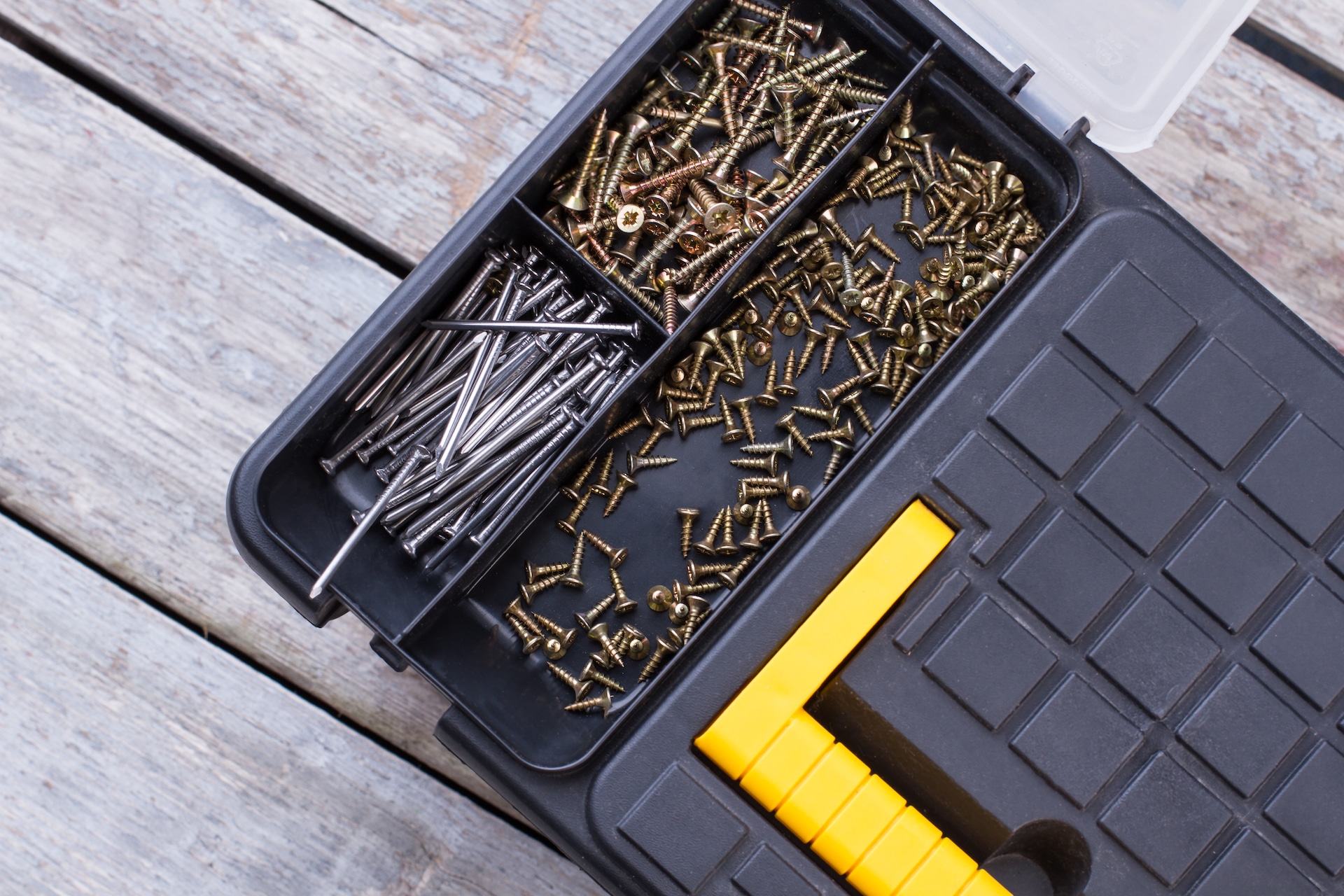
Nails are everywhere. Whether you’re a DIY-er or a full-on tradie, there’s a pretty good chance your next project is going to use some sort of nails.
Yet as a hardware store, we notice when we speak to our customers that many of them don’t have a clear idea of what type of nails they need. Many more aren’t even aware that there are so many different types!
We’ve put together a list of 10 of the most popular nails used today. This certainly isn’t an exhaustive list, but it should go a long way to helping you understand the kinds of nails that are out there and what you can use them for.
1. Common Nails

This is your run-of-the-mill nail. You’ll find it everywhere and it’s widely used for joining timber. It has an almost flat head (the top) that’s slightly larger than the shank (the pointy part). It’s great for most general jobs but doesn’t have any extra features.
2. Box Nails
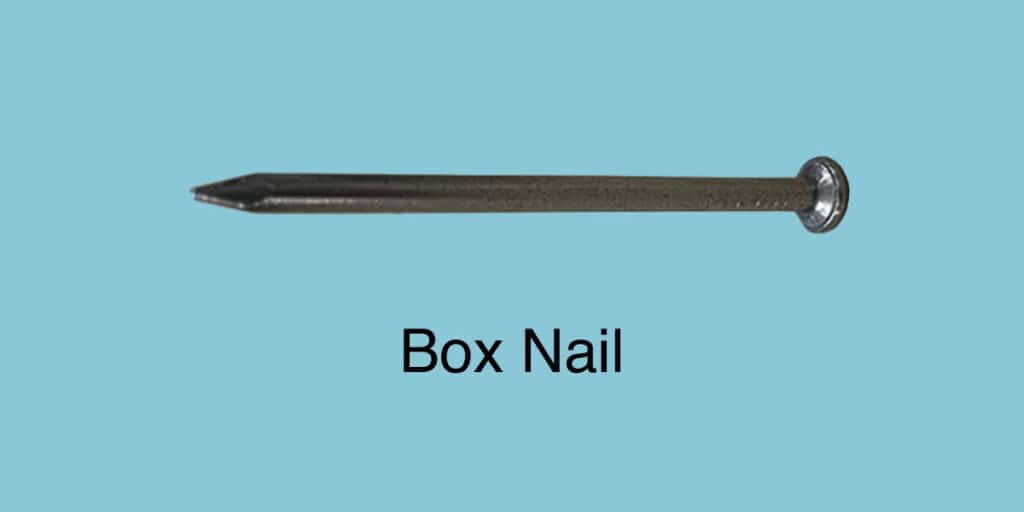
These are similar to the common nail, but they have a noticeably thinner shank. This thinner diameter means you’re much less likely to split the wood, but it also means these nails aren’t as strong as common nails.
Use these on smaller, more delicate projects where you’re worried about splitting. Don’t use these on anything heavy-duty or weight-bearing.
3. Masonry Nails
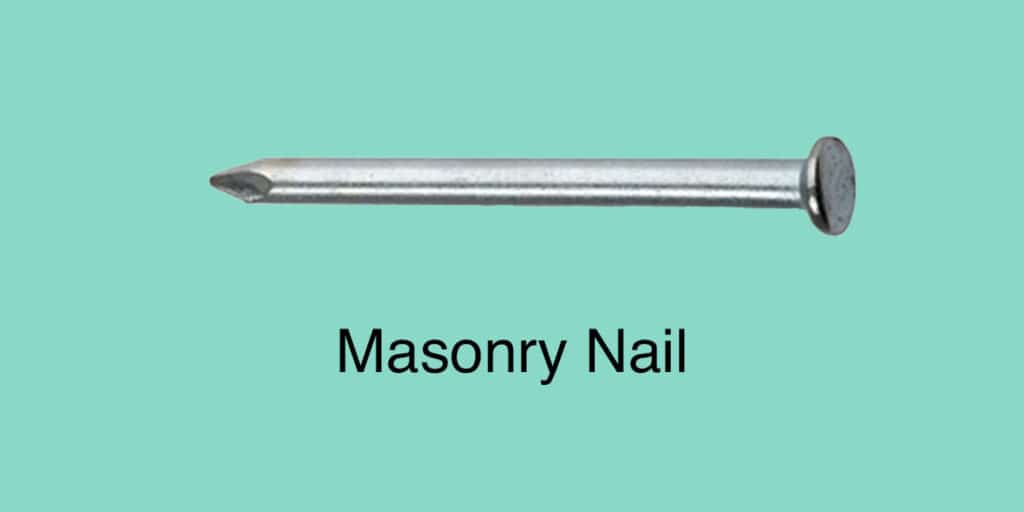
Basically the opposite of a box nail – these things are heavy duty. Designed to be driven into brick or stone, these nails have small heads and thick, hardened shanks that won’t break.
Masonry nails can appear in a variety of shapes but generally feature a tapered shank. As expected, they’re great for masonry. But don’t use this on wood or the tapered shank is likely to split the timber.
4. Concrete Nails
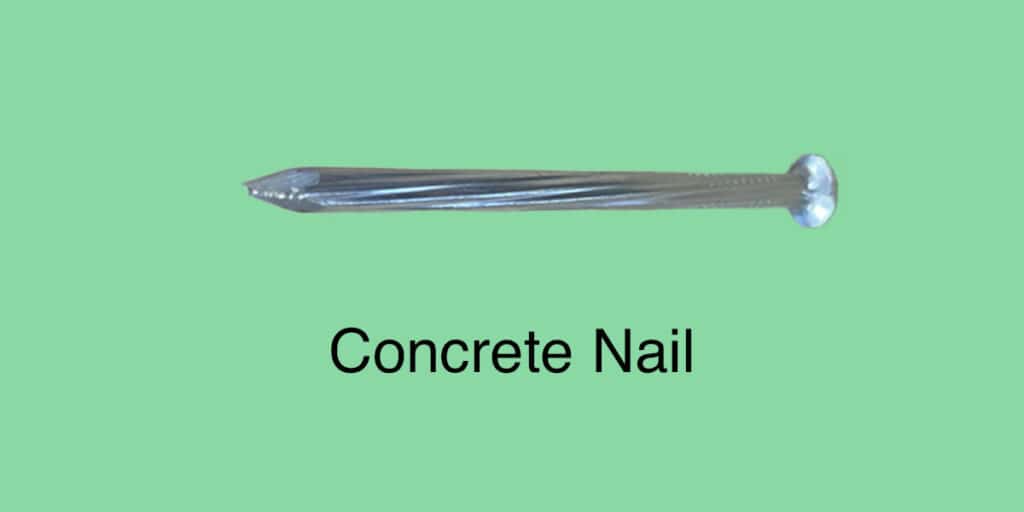
The ‘Concrete Nail’ is another type of masonry nail that’s usually slightly more expensive. These are similar in shape but have fluted shanks (meaning they have little grooves in them) that offer even more holding power. It makes these nails ideal for driving into concrete, which is generally a much tougher surface than masonry.
5. Cut Flooring Nails
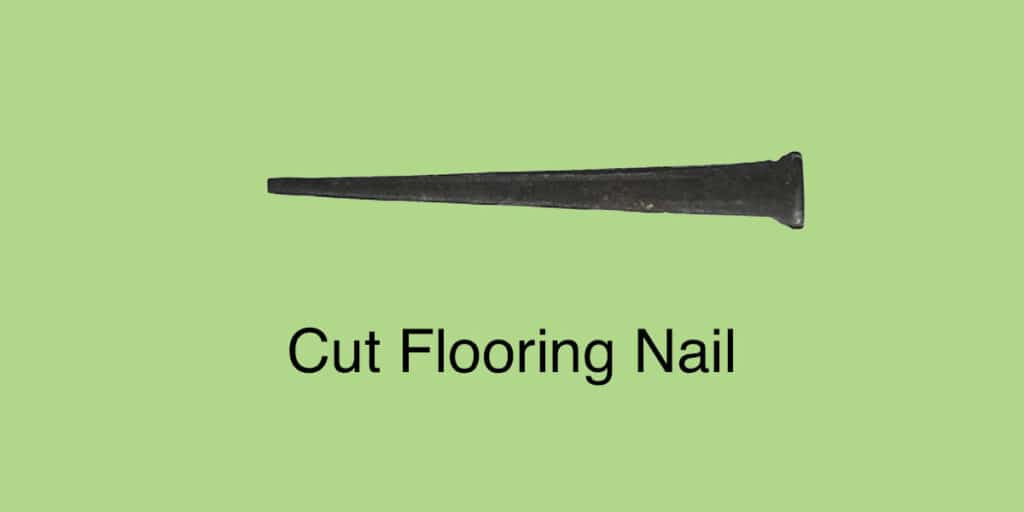
Probably the most unique looking nail on this list, cut flooring nails are cut from a sheet of steel or iron and have a tapered square shank, rather than a rounded one like the other nails. This square ‘cut’ shape was actually the most common style of nail until the mid 20th century.
These days, cut nails are primarily used for securing hardwood flooring. When driven in parallel to the grain of the wood, they can provide an extra-strong hold compared to round nails. Their flat rounded heads also give off a great ‘antique’ look that complements wooden flooring.
6. Finishing nails
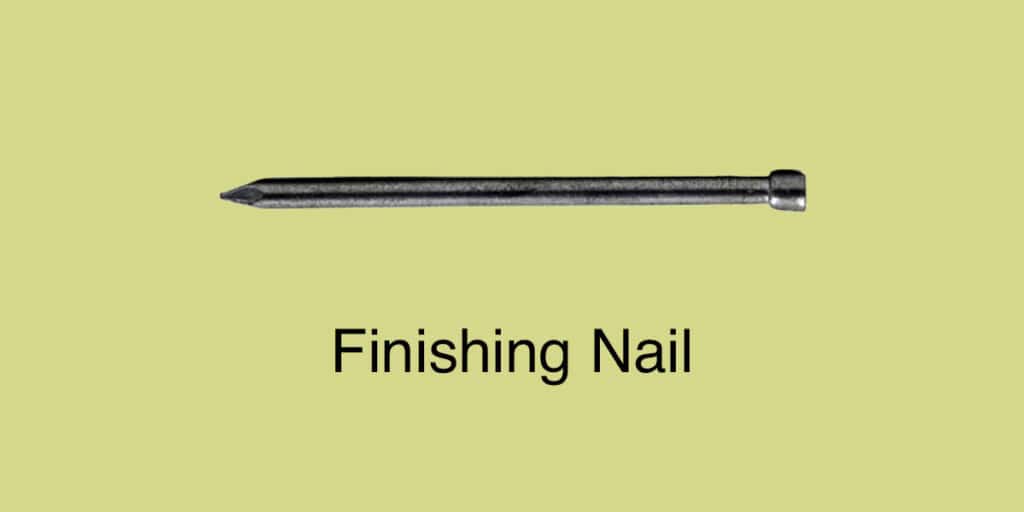
These nails are similar in shape to a common nail, but they have smaller barrel-shaped heads. These small heads can be driven below the surface of the wood using a nail set (called countersinking) to make the nail’s presence much more subtle.
This makes these nails great for finishing jobs, hence the name. Finishing nails are used most commonly in upholstering furniture or when installing an interior trim.
7. Brads
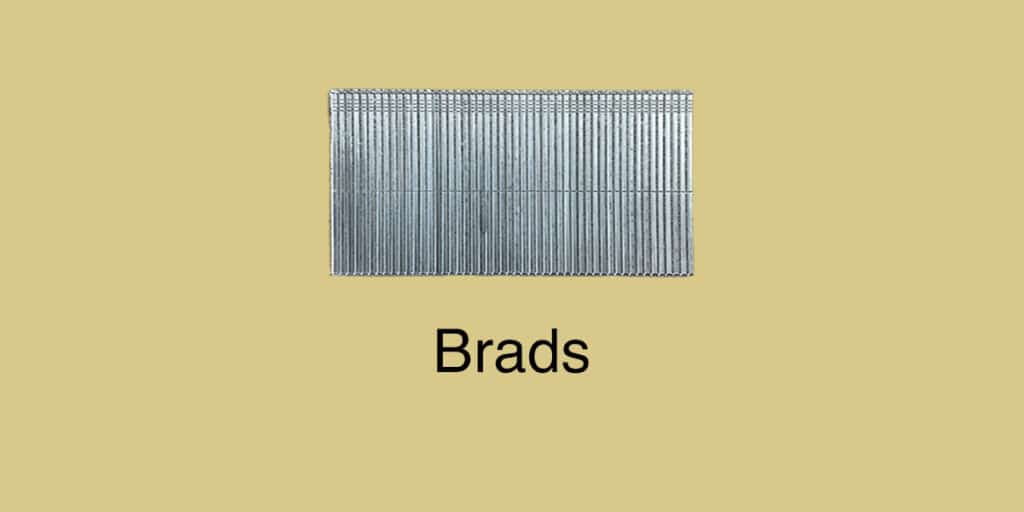
A close relative of the finishing nail, but smaller. These nails are made from fine, 18 gauge wire and are generally much smaller and thinner than most other nails. Like finishing nails, they have a small barrel-shaped head that can be countersunk below the surface of the wood.
However, the thinner shank means that these nails aren’t as strong as finishing nails. Use Brads for small or fiddly crafting work when you’re worried that a bigger nail will split the timber.
8. Double-headed Nails
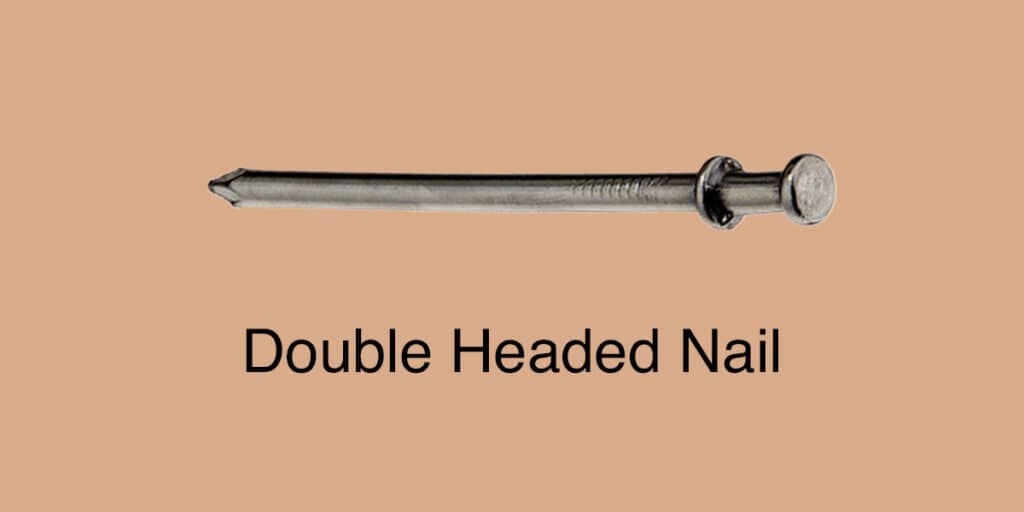
Sometimes called ‘Duplex’ nails, these are great for temporary constructions like scaffolding. These nails have two heads, but are typically only driven up to the lower head, leaving the top head sticking out. This makes them extra easy to remove later.
9. Roofing Nails
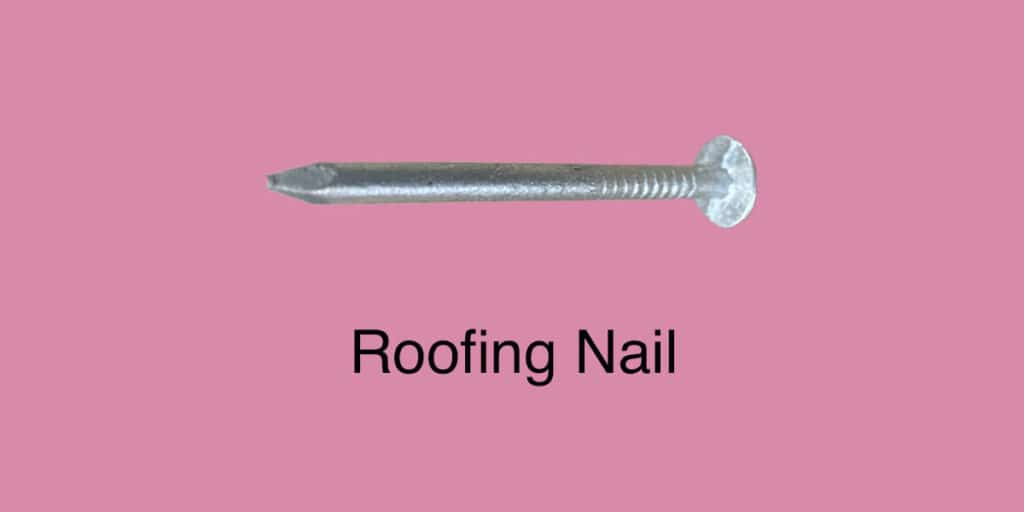
Roofing nails have very wide heads and heavy, galvanised shanks. These nails are highly resistant to weather and are designed to hold down roofing material in all kinds of weather conditions.
10. Annular Ring Nails
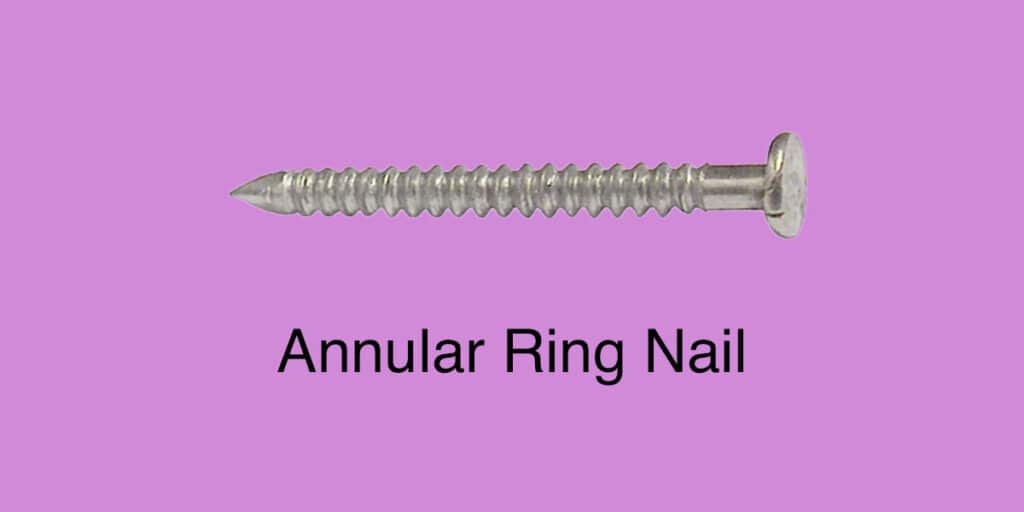
These thin nails have rings lining the shank to help hold the nail in place. At first glance, this nail may resemble a screw, but all of these annular rings are self-contained and don’t go around in a spiral.
Instead, these rings will push the wood particles aside as the nail is driven in. The particles then settle back into place between the rings, giving the nail extra-strong holding power. For this reason, annular ring nails are used when you need your project to last a long time. They’re most often found holding up boards on the outside of homes.
This is by no means an exhaustive list. There are many variants on these nails out there, with some of them being quite obscure. But knowing more about these 10 common nails will still give you a much better understanding when you’re choosing nails for your next project.
Not keen to waste time at the hardware store? Order from our huge range of nails and tool accessories at Multifors. Delivery anywhere across metro Melbourne from only 19.95!
-
 11, Jul, 2022
11, Jul, 2022Feature Product: The Stain Proof Range
We regularly review some of our favourite products. Today, we’re... -
 5, Jul, 2022
5, Jul, 2022Concrete Sealer: What You Need to Know
Concrete is a sturdy material that’s practical and affordable. In... -
 24, Jun, 2022
24, Jun, 2022A Product Guide for DIY Pool Areas
Tiling a pool area is a great DIY project. In...


